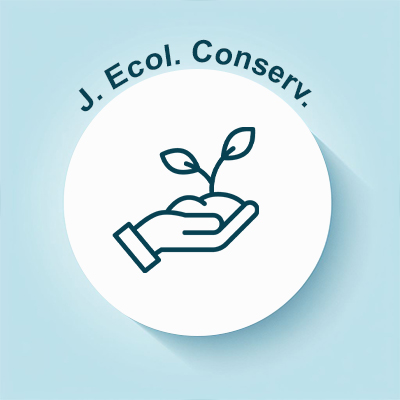
Journal of Ecology and Conservation
OPEN ACCESS
ISSN: 3048-5177

OPEN ACCESS
ISSN: 3048-5177
Wildlife conservation aims to protect species and habitats from extinction and ensure biodiversity. This includes actions to conserve natural habitats, manage hunting and poaching, and reduce human-wildlife conflict. Conservation initiatives usually target species at risk of extinction, trying to boost population counts and ensure genetic diversity. Wildlife conservation also focuses on safeguarding ecosystems overall, so species can live without the interference of habitat loss or pollution.
Threats to wildlife
Habitat destruction
Destroying habitat reduces the number of habitats available to wildlife. A continuous tract of habitat is broken up by habitat fragmentation, which frequently splits big wildlife populations into multiple smaller ones. The main causes of species reductions and extinctions are habitat loss and fragmentation brought on by humans. Urbanization, agricultural growth, and deforestation are important instances of habitat loss brought on by humans. By decreasing the amount of space and resources available to them and raising the possibility of confrontation with humans, habitat degradation and fragmentation can make wildlife populations more vulnerable.
Deforestation
The deliberate removal and destruction of forests is known as deforestation. Human-induced habitat degradation is a result of deforestation, which occurs when trees are cut down and their habitats are destroyed. Deforestation frequently occurs for a number of reasons, most commonly for agricultural use or logging, which is the process of obtaining wood for fuel or construction. Since over 80% of the world's species are forest dwellers, deforestation not only destroys habitat for the numerous creatures that live there but also contributes to further climate change, posing a serious threat to biodiversity.
Overexploitation
Harvesting plants and animals more quickly than a species can recover is known as overexploitation. Although it is frequently linked to overfishing, overexploitation can affect a variety of species, such as plants, amphibians, reptiles, mammals, and birds.
Poaching
Some species, especially those that are endangered and hence commercially valuable, are seriously threatened by poaching for the illegal wildlife trade. Among these species are numerous huge mammals, such as tigers, rhinoceroses, and African elephants.
Ocean Acidification
Ocean carbon dioxide concentrations rise in tandem with atmospheric concentrations. The biological pump is the process by which the ocean normally takes up carbon from the atmosphere and stores it in the deep ocean and sea floor. The ocean's pH is lowered and becomes more acidic due to rising carbon dioxide emissions and greater stratification, which slows the biological pump.
Culling
Governments intentionally and selectively kill wildlife for a variety of reasons, a practice known as culling. Shark culling is one instance of this; thousands of sharks, along with turtles, dolphins, whales, and other marine species, have been killed by "shark control" operations in Queensland and New South Wales, Australia.